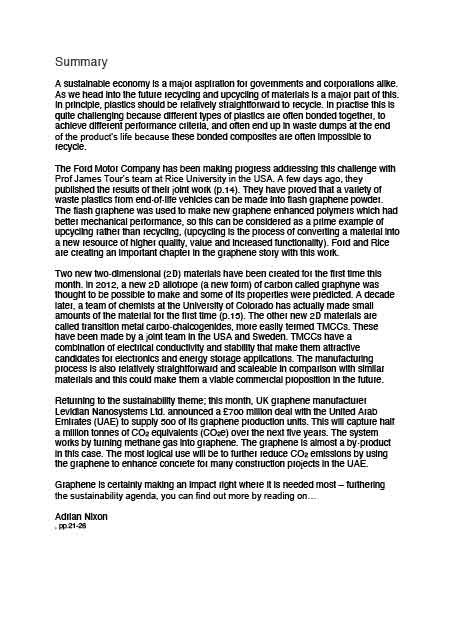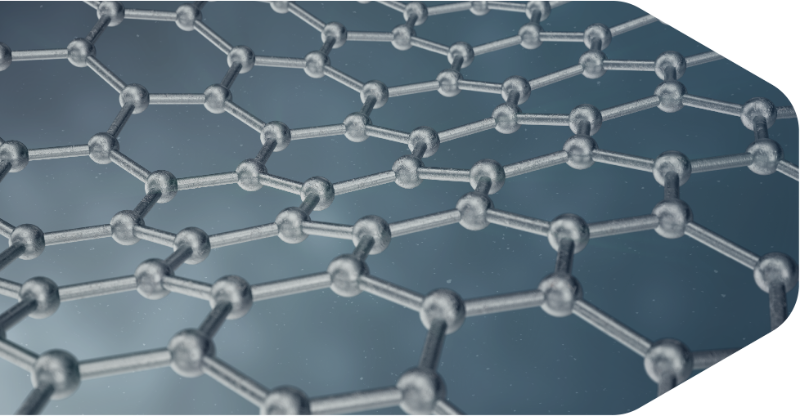Description
A sustainable economy is a major aspiration for governments and corporations alike. As we head into the future recycling and upcycling of materials is a major part of this. In principle, plastics should be relatively straightforward to recycle. In practise this is quite challenging because different types of plastics are often bonded together, to achieve different performance criteria, and often end up in waste dumps at the end of the product’s life because these bonded composites are often impossible to recycle.
The Ford Motor Company has been making progress addressing this challenge with Prof James Tour’s team at Rice University in the USA. A few days ago, they published the results of their joint work (p.14). They have proved that a variety of waste plastics from end-of-life vehicles can be made into flash graphene powder. The flash graphene was used to make new graphene enhanced polymers which had better mechanical performance, so this can be considered as a prime example of upcycling rather than recycling, (upcycling is the process of converting a material into a new resource of higher quality, value and increased functionality). Ford and Rice are creating an important chapter in the graphene story with this work.
Two new two-dimensional (2D) materials have been created for the first time this month. In 2012, a new 2D allotrope (a new form) of carbon called graphyne was thought to be possible to make and some of its properties were predicted. A decade later, a team of chemists at the University of Colorado has actually made small amounts of the material for the first time (p.15). The other new 2D materials are called transition metal carbo-chalcogenides, more easily termed TMCCs. These have been made by a joint team in the USA and Sweden. TMCCs have a combination of electrical conductivity and stability that make them attractive candidates for electronics and energy storage applications. The manufacturing process is also relatively straightforward and scaleable in comparison with similar materials and this could make them a viable commercial proposition in the future.
Returning to the sustainability theme; this month, UK graphene manufacturer Levidian Nanosystems Ltd. announced a £700 million deal with the United Arab Emirates (UAE) to supply 500 of its graphene production units. This will capture half a million tonnes of CO2 equivalents (CO2e) over the next five years. The system works by turning methane gas into graphene. The graphene is almost a by-product in this case. The most logical use will be to further reduce CO2 emissions by using the graphene to enhance concrete for many construction projects in the UAE.
Graphene is certainly making an impact right where it is needed most – furthering the sustainability agenda, you can find out more by reading on…
Adrian Nixon
1st June 2022










